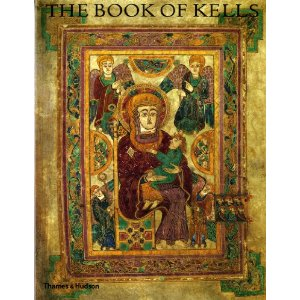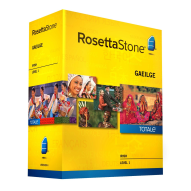The Irish Book of Kells

|
The Book of Kells
|
The Irish Book of Kells is almost as symbolic to Ireland and St. Patrick as the shamrock. It is probably the most well-known sample of medieval illumination and calligraphy still around today. St. Patrick introduced books, along with Christianity, to Ireland. The pagan Celtic people in Ireland had no useful written language. What they did have was called Ogham, which was a primitive series of dashes and dots. When the Roman or Latin alphabet was introduced in the fifth century, the Irish adapted it for the Gaelic language so they could record their ancient folklore and legends. Even though I can't speak or read Irish, I have studied it a bit, and always thought that it was very similar to Latin.
Several artists scribed the Book of Kells. There are subtle variations in the illuminations as well as in the calligraphy. The calligraphers may have been completely different people than those who painted the illuminations. Studies have shown that the artists had different styles of penmanship; one who used rounded letter forms, one who used fancy flourishes and one who used bright red much of the time. The manuscript was written and decorated entirely by natural daylight. The monks at the monasteries were afraid of accidental fire, so candles or oil lamps were forbidden in the work rooms. The scribes worked from first light until dark, stopping only for prayer and meals.
Their scribing technique was borrowed by the Celtic monks from Egyptian manuscripts brought to Ireland by missionaries in the fifth century. The use of small red dots in Celtic manuscripts was a decorative device. The dots were used to outline large initials or to make the text stand out from the rest of the page. In later years, Celtic artists developed the small red dot into a completely original art form by making delicate webs, knot work, and integrating animals into the mix.
The Irish Book of Kells was originally written on about 185 animal skins. Paper being then unknown, this parchment was their only source of writing material. The monks kept a herd of as many as 1200 cattle, which also provided food and milk for the monastery. The monks, who labored endlessly, copying out page after page of text, often grew tired and made mistakes. The scribes occasionally repeated a word or line or made a spelling error. The Book of Kells contains numerous places where the editor later made corrections to the Latin text. In one place near the end, a scribe wrote "...very long, very verbose, and very tedious for the scribe".
Kells, County Meath, once one of the great centers of Celtic Christianity, may have been where the famous Book of Kells was written and illustrated. The exact history of the book is unknown, however, historians have loosely pieced together it's history based on scraps of evidence and vague clues. It is believed that in 563 A.D., St. Colmcille founded a monastery on the Hebridean island of Iona. When it was raided in 802 A.D. by the Vikings, some of the monks fled to Kells, bringing with them their precious treasure. The 1200 year old Book of Kells, once housed in a monastery in Kells for many years, is now located in it's permanent home at Trinity College in Dublin.
Disclaimer: LittleShamrocks.com is an affiliate website that receives commissions from sales of the products listed. We have purchased and sampled many, but not all, of the products on these pages.
© Copyright LittleShamrocks.com. All Rights Reserved.




